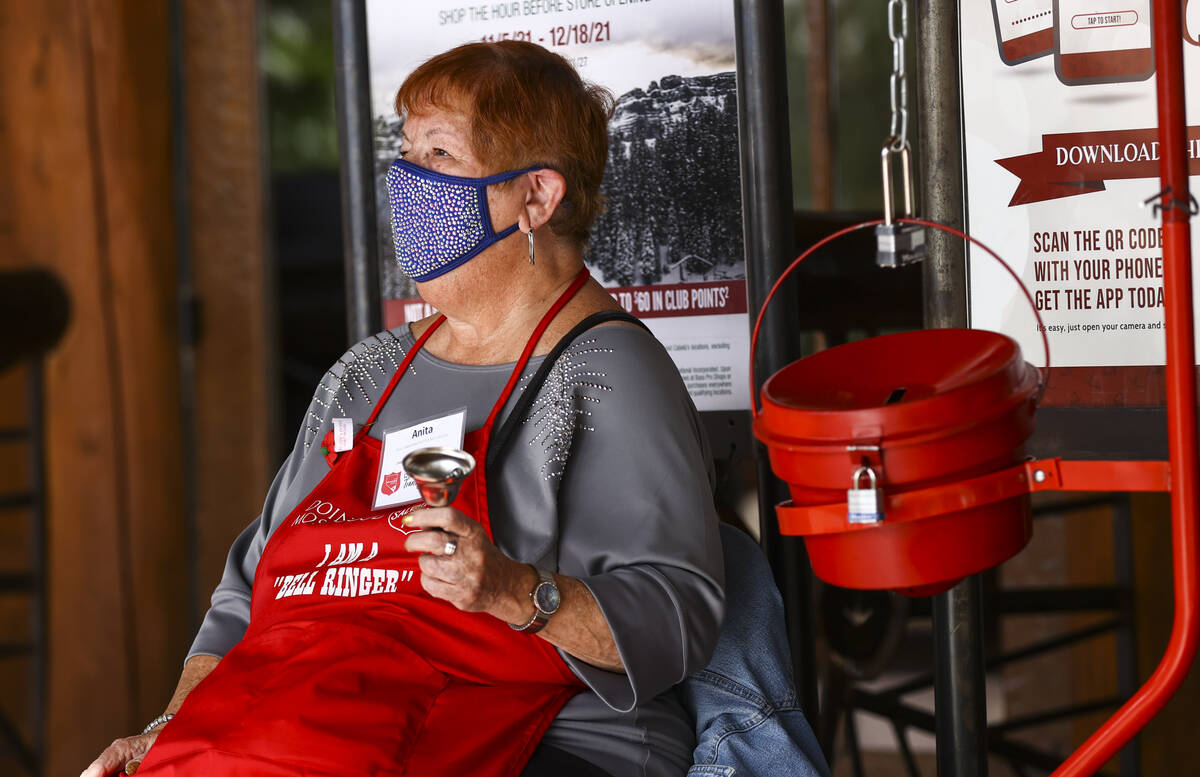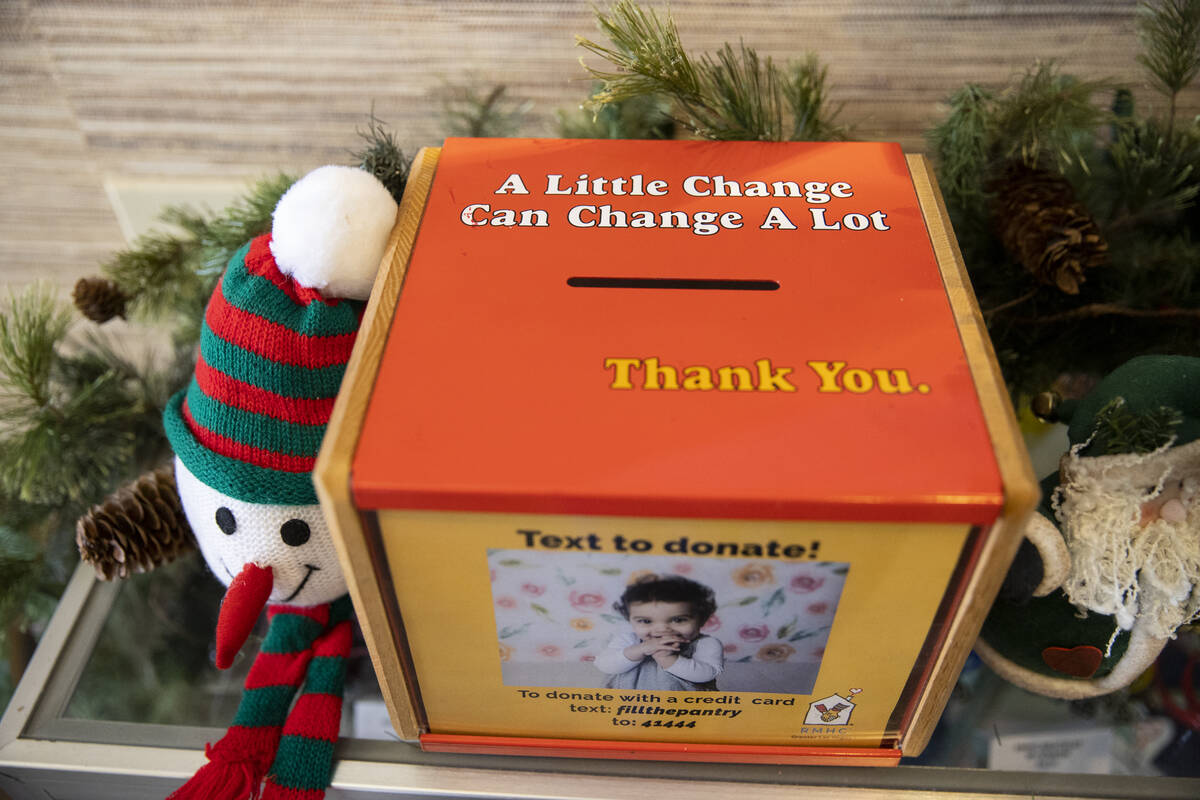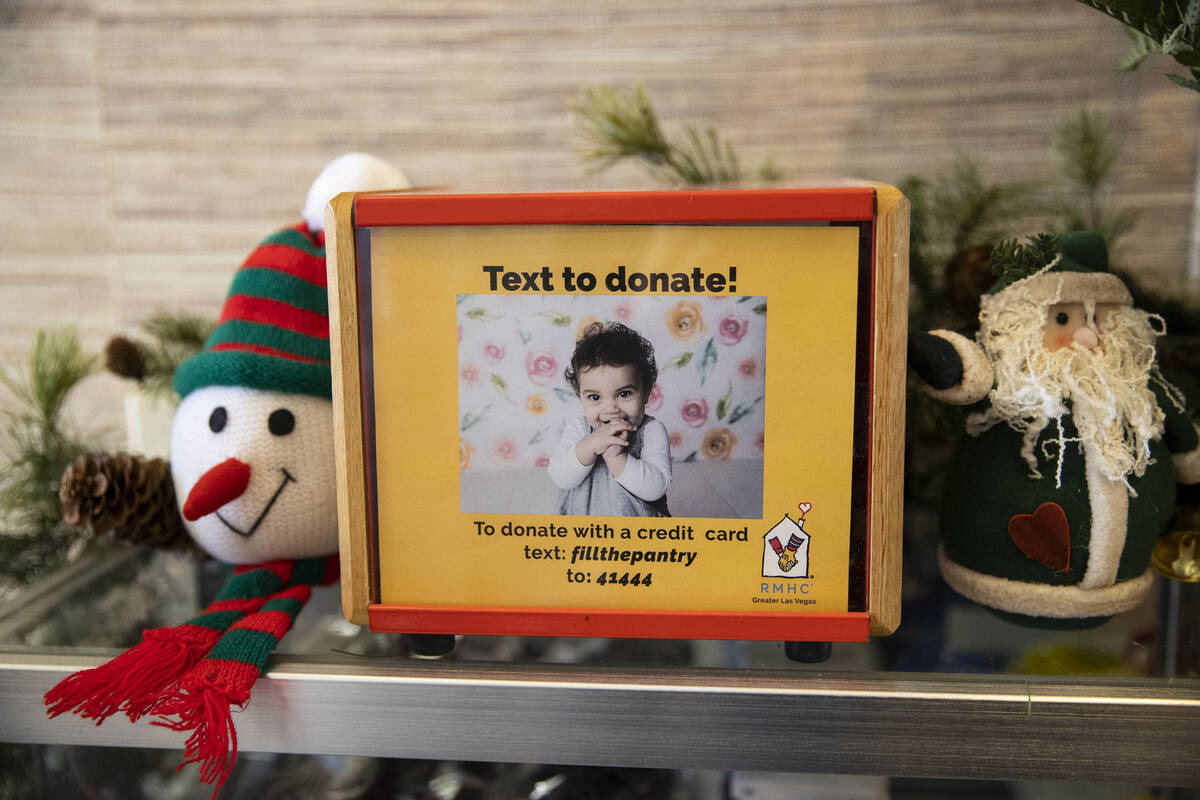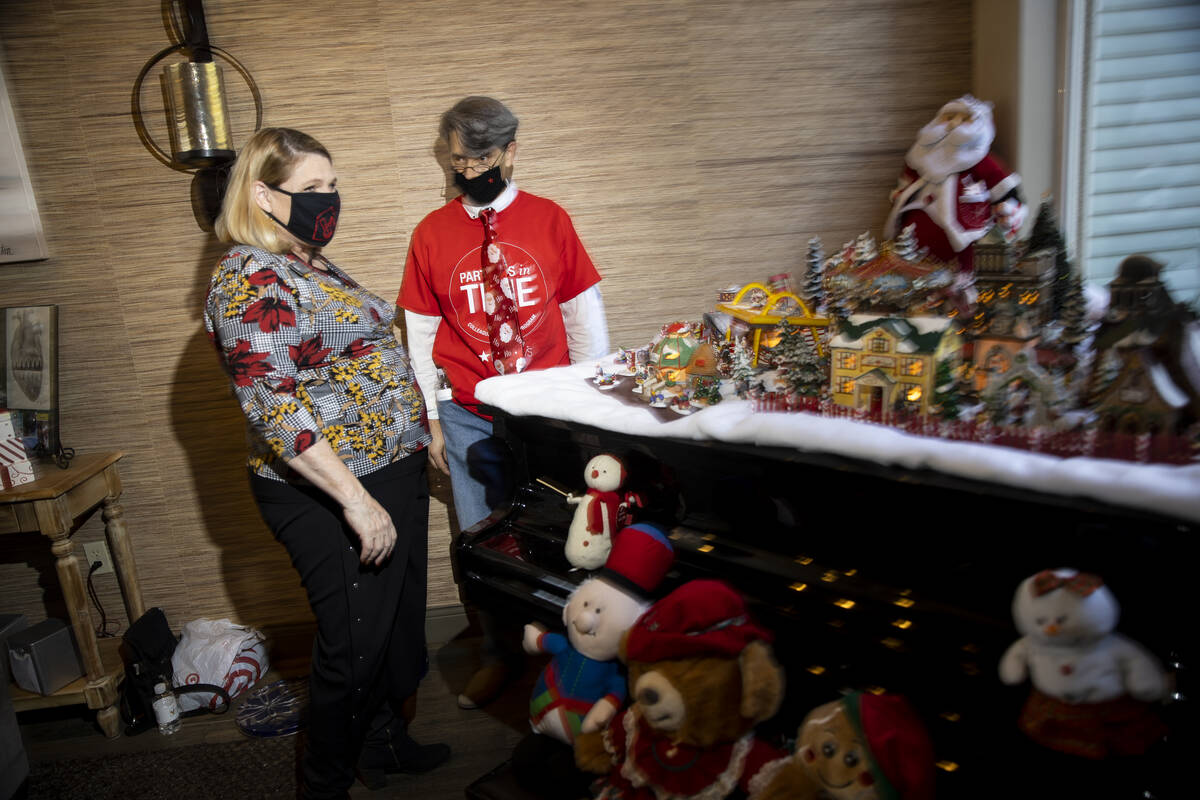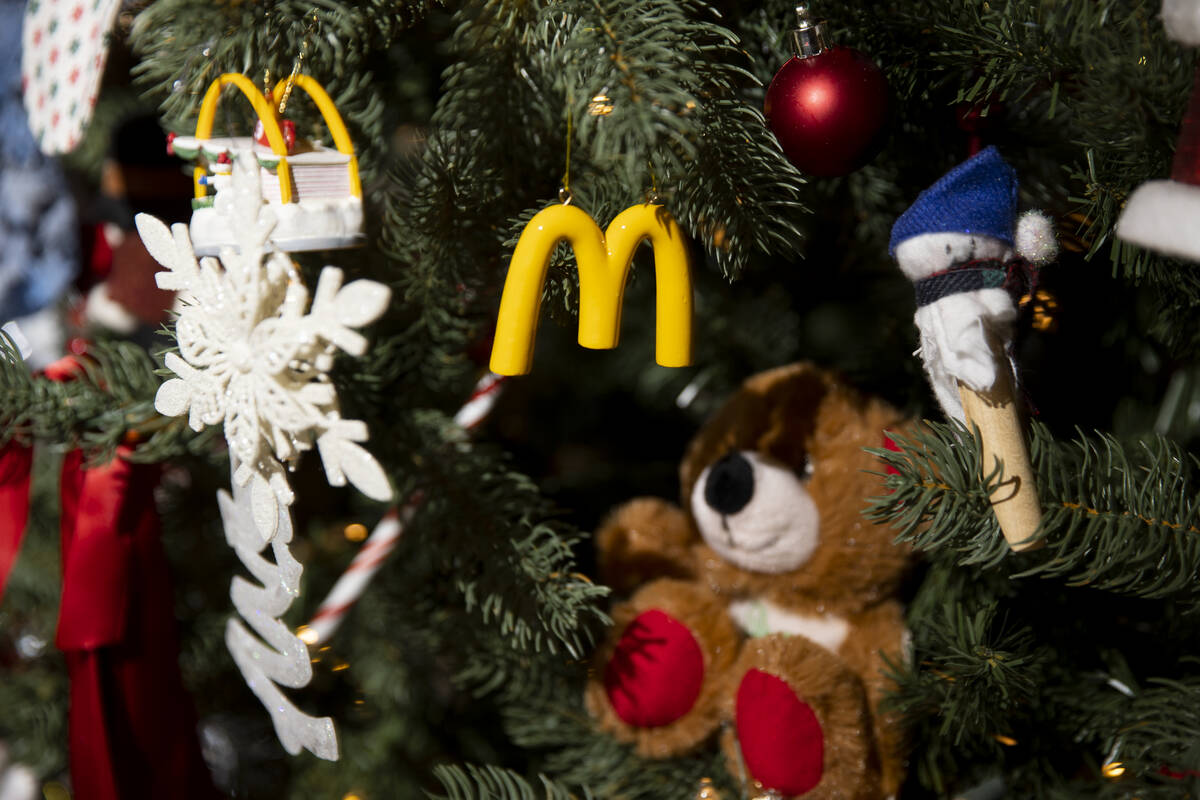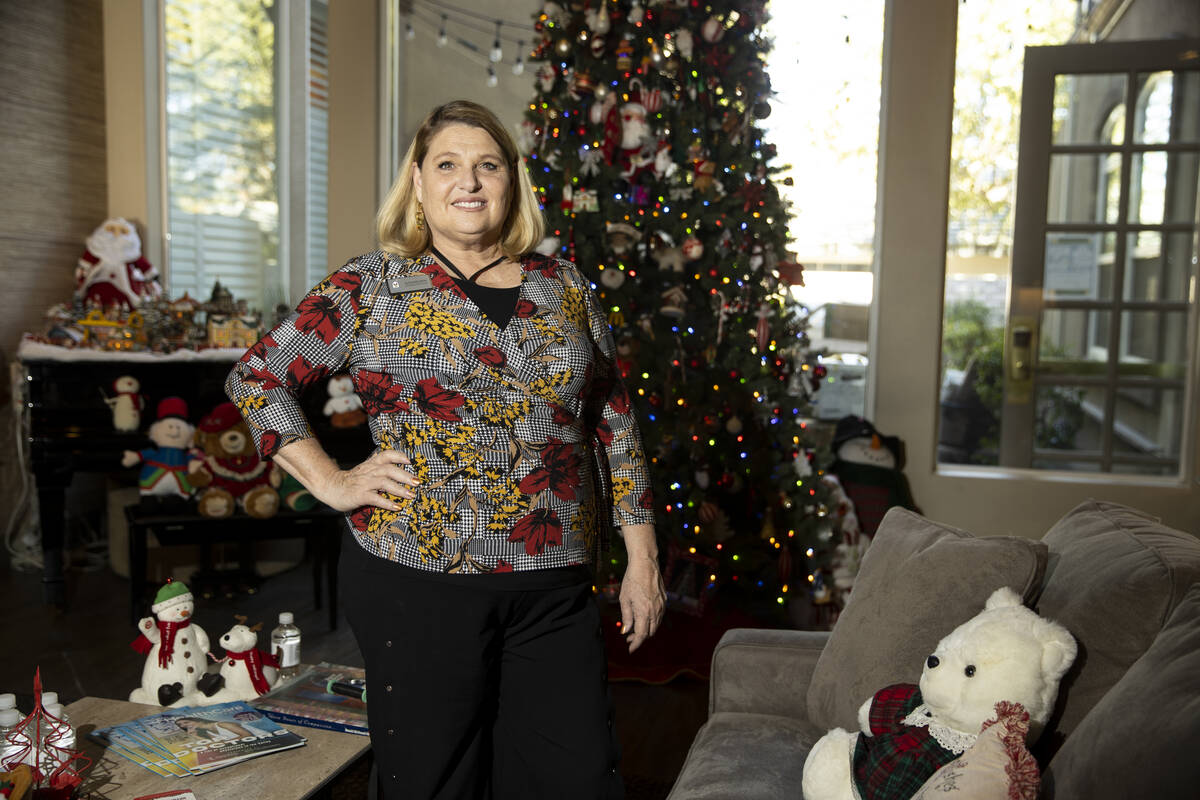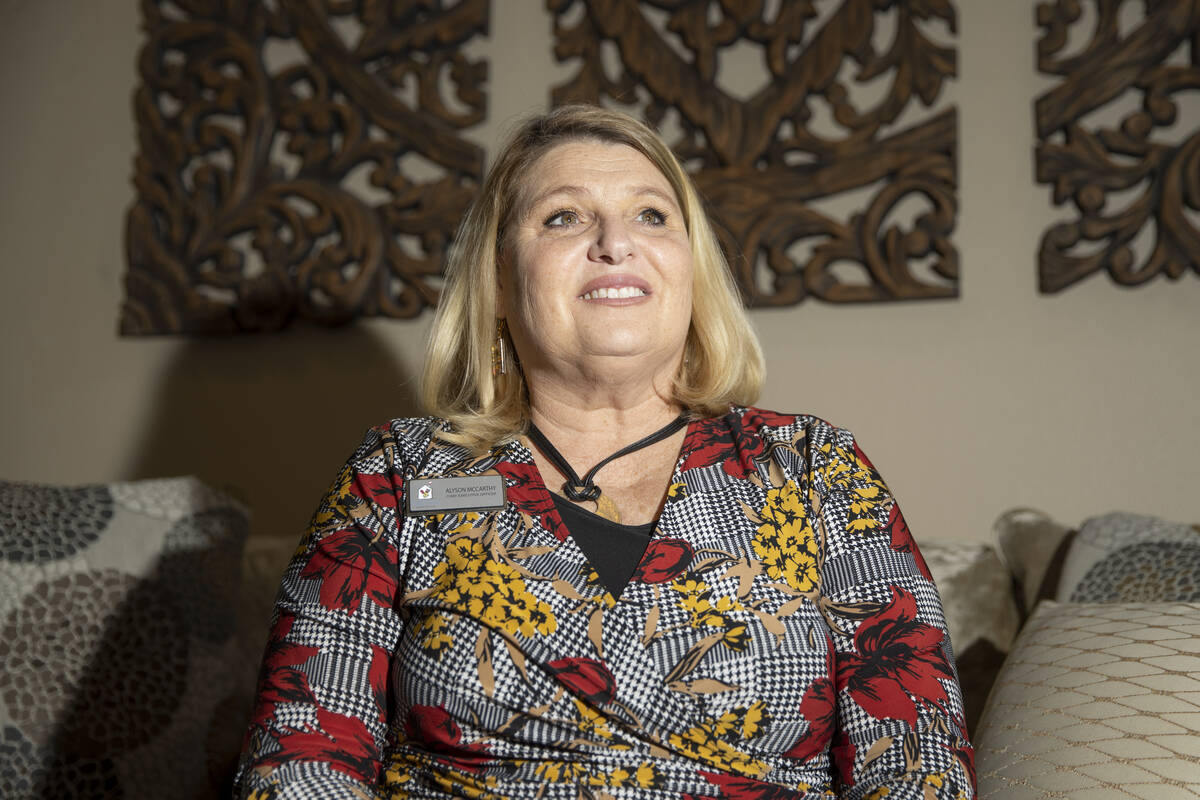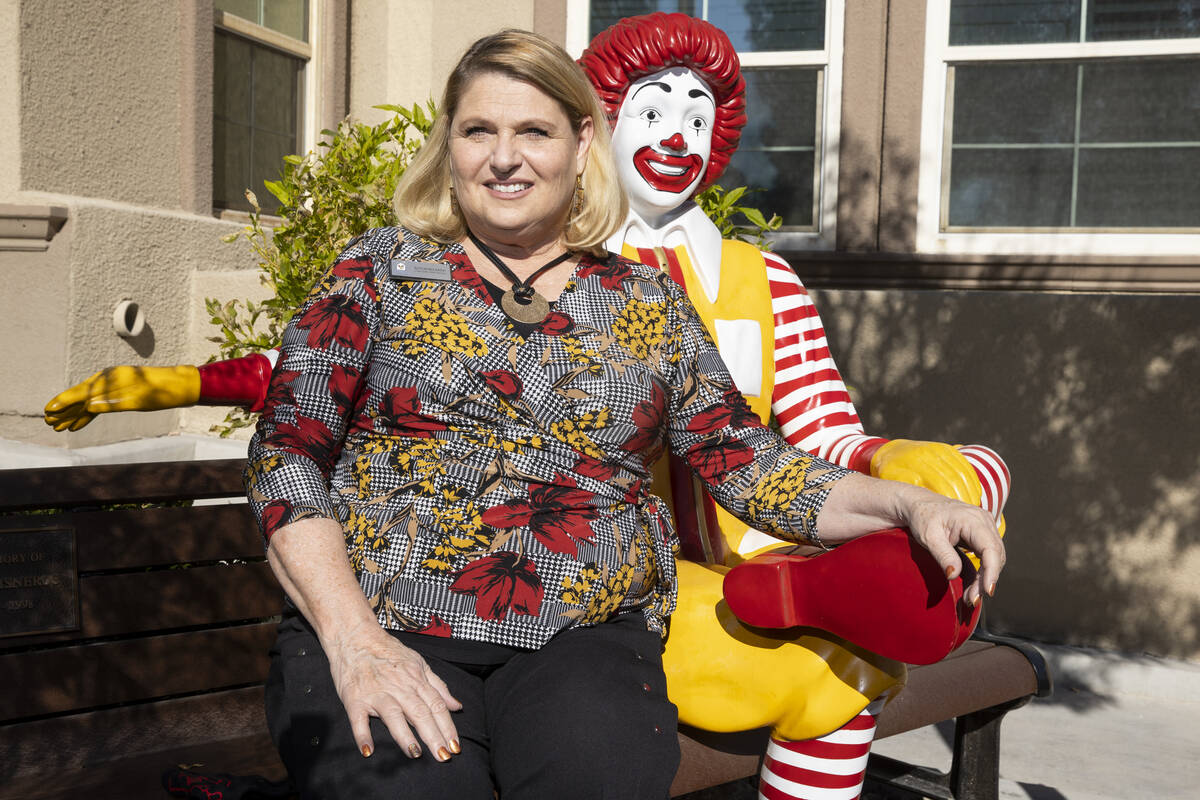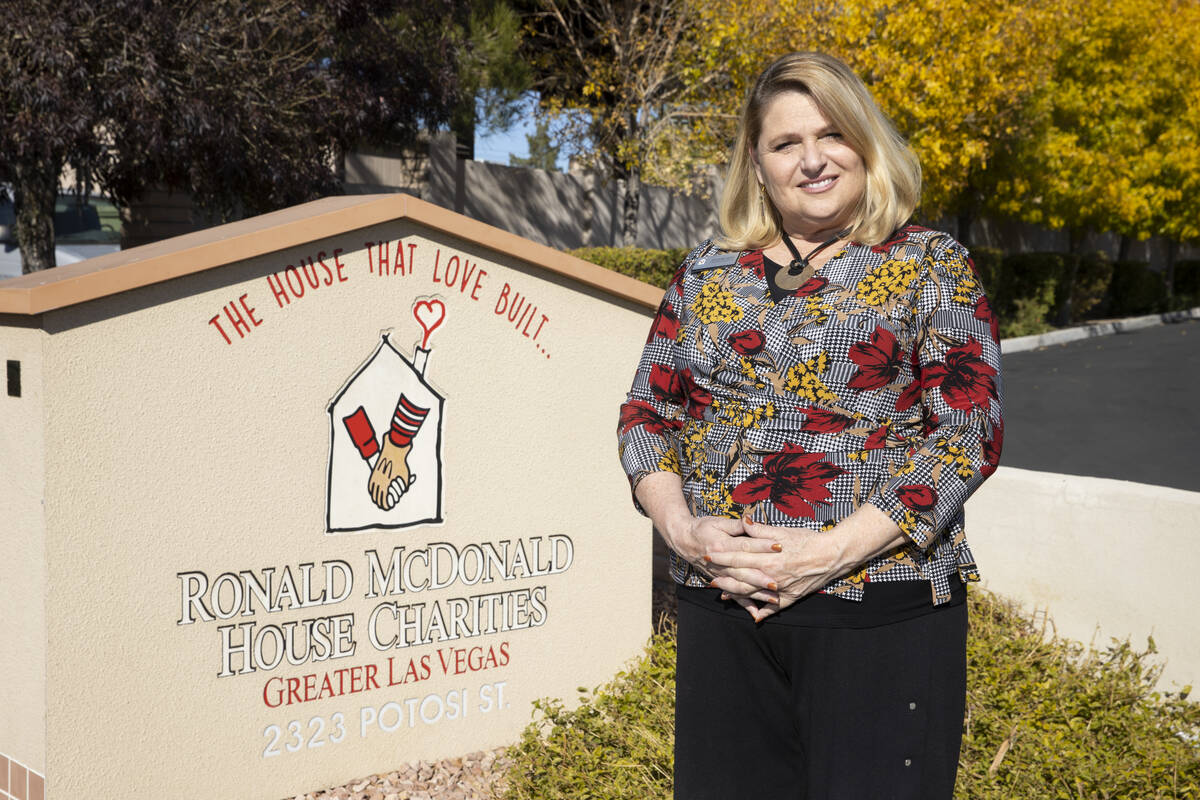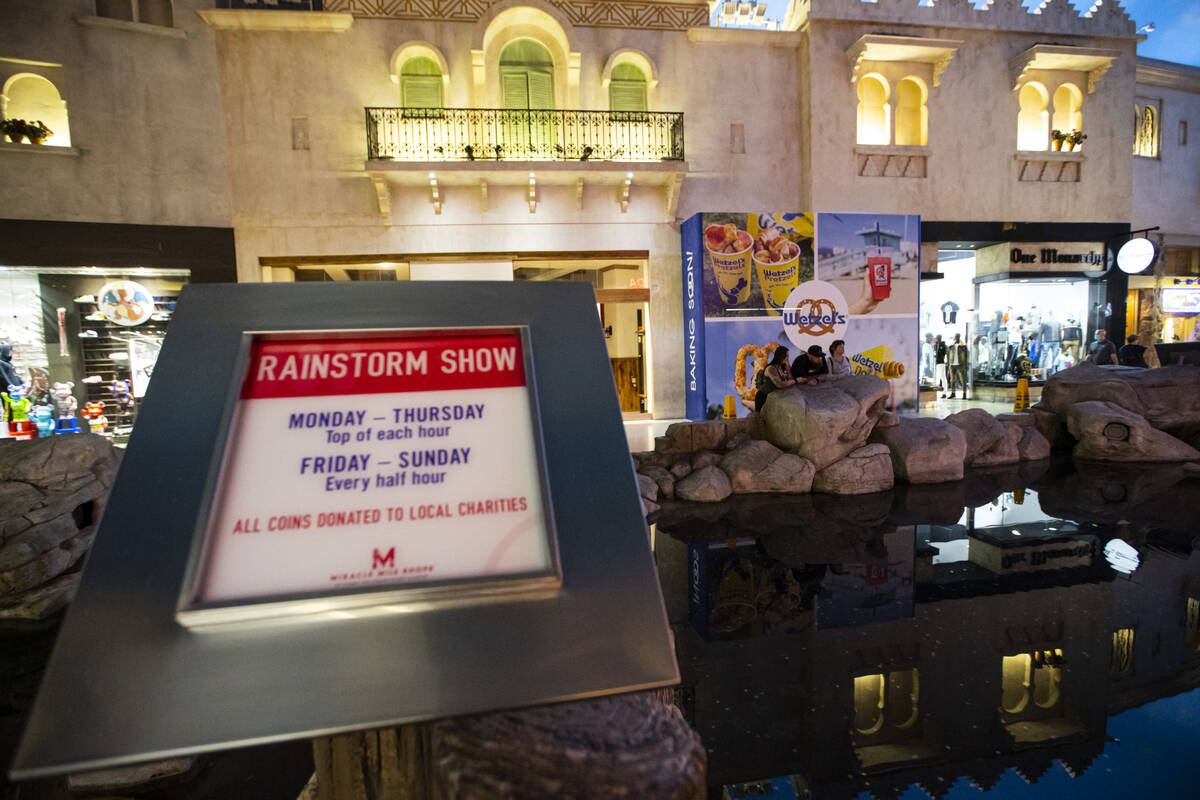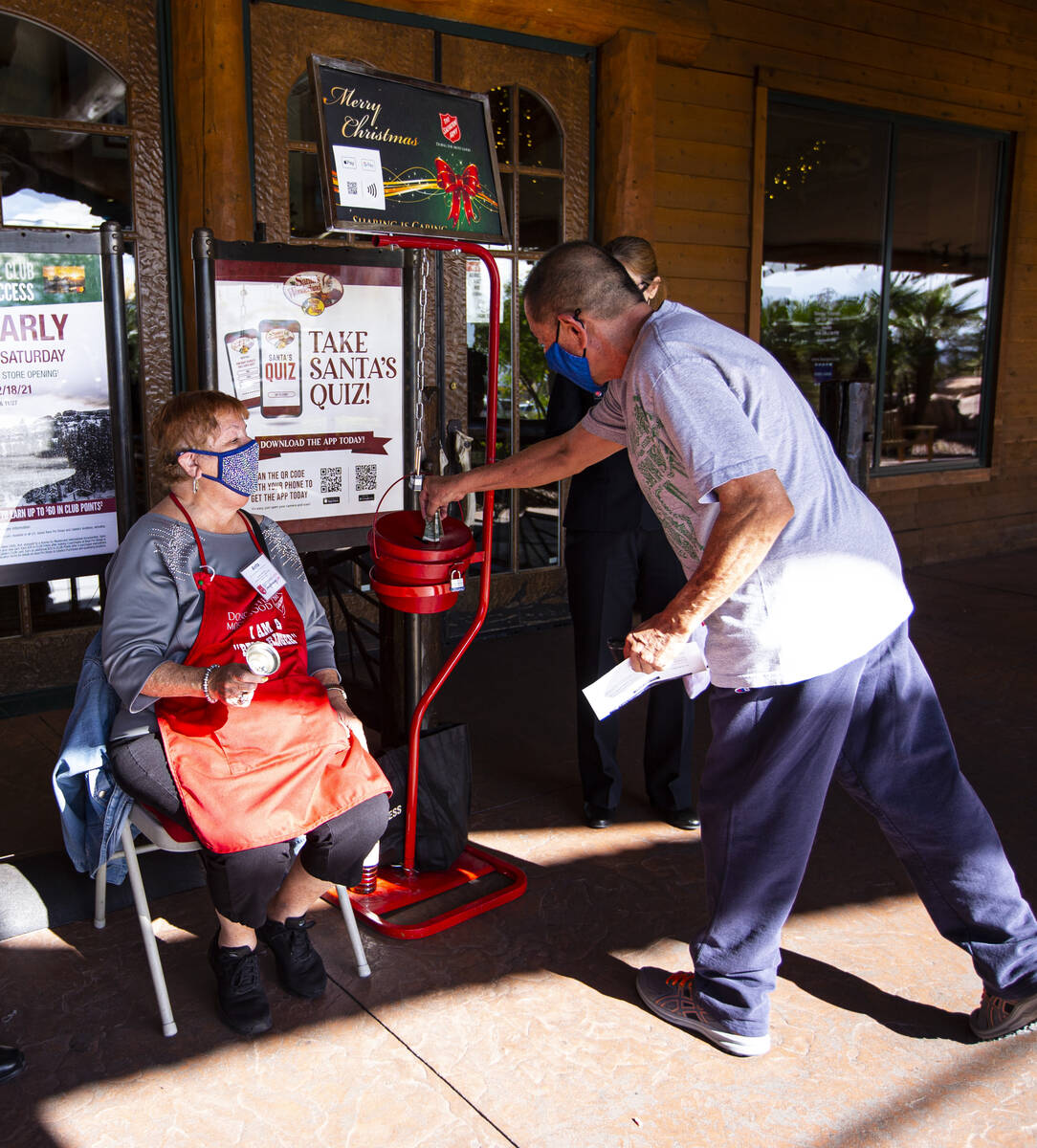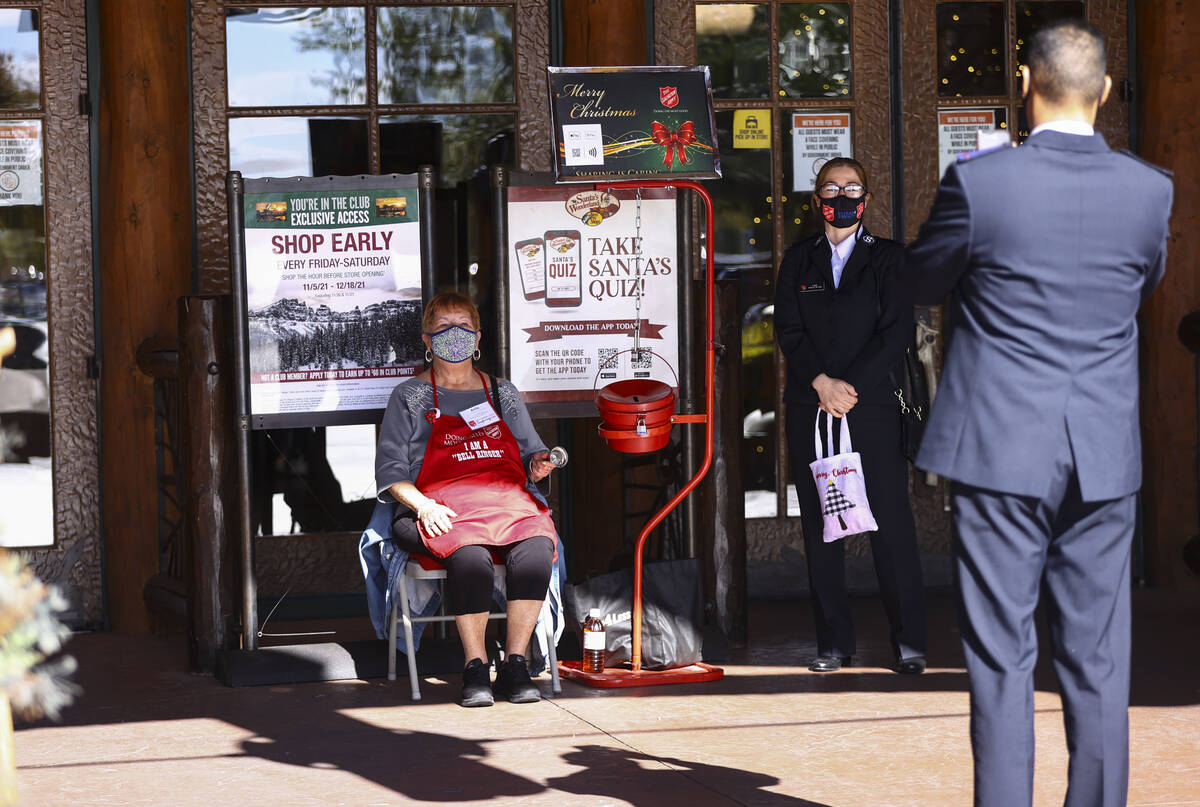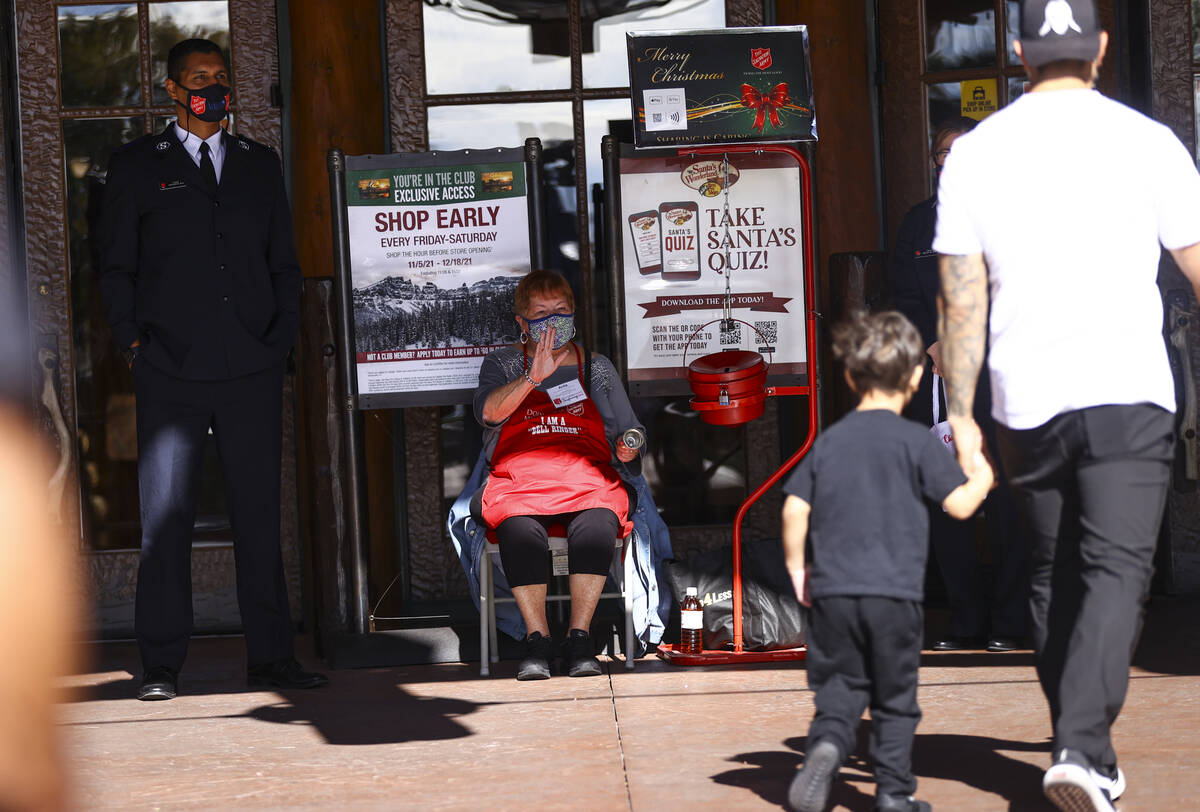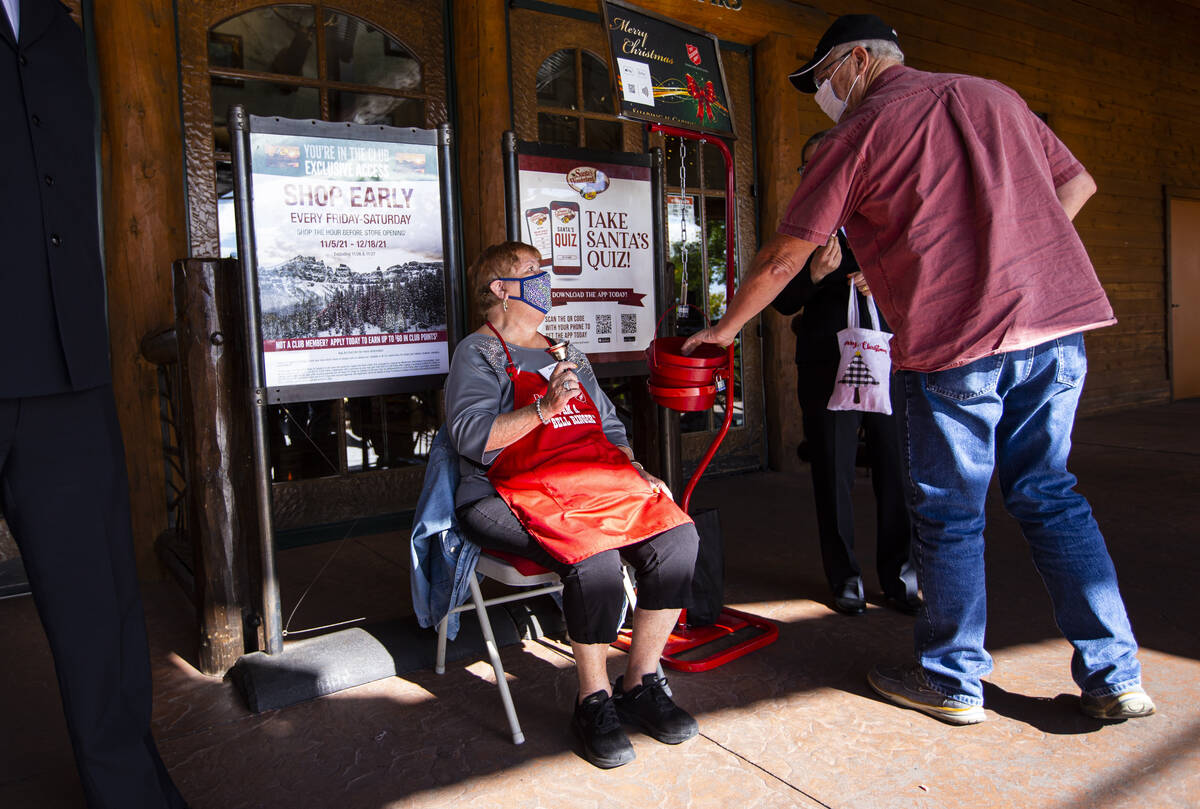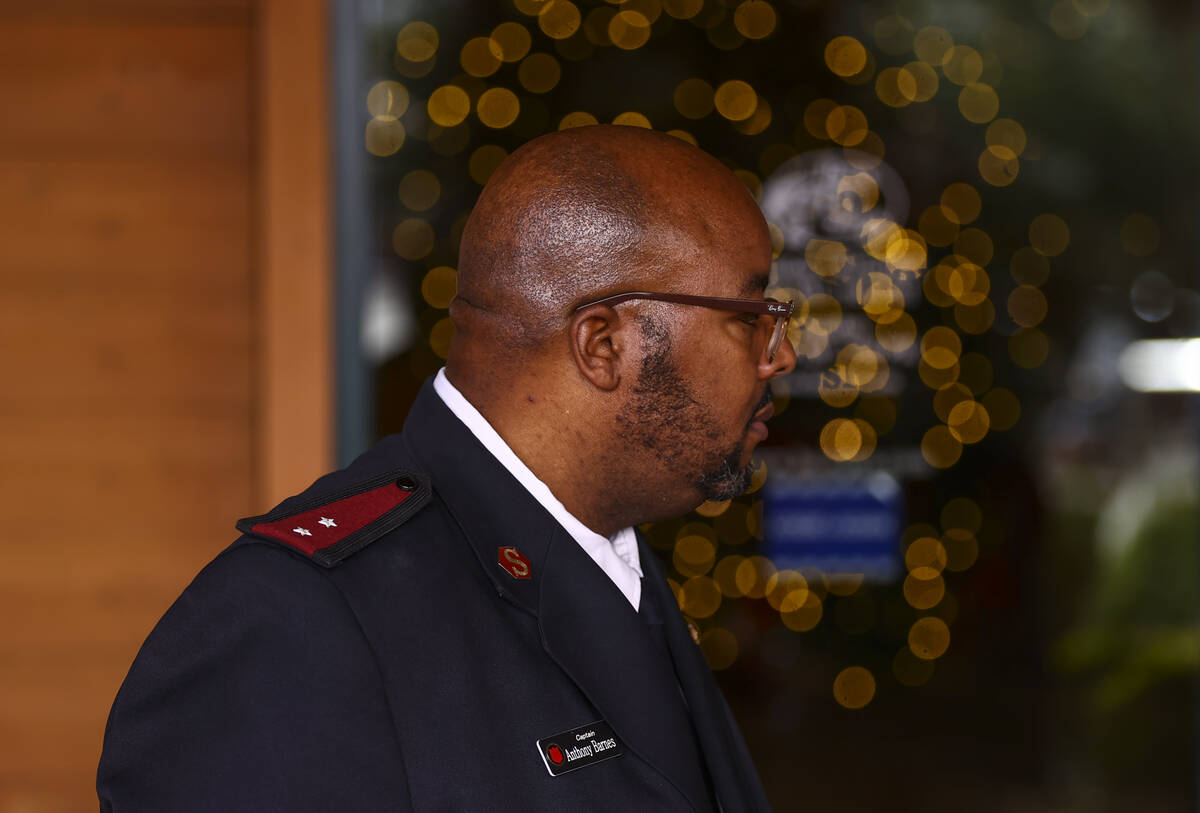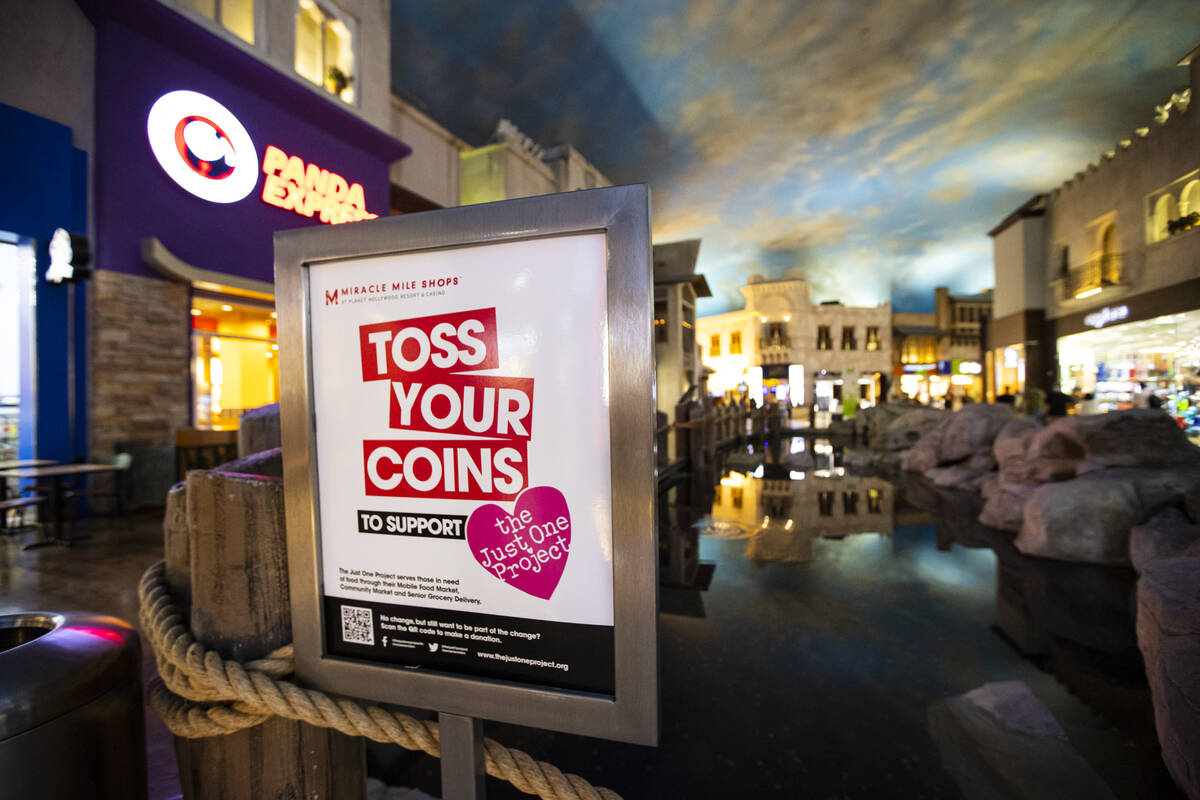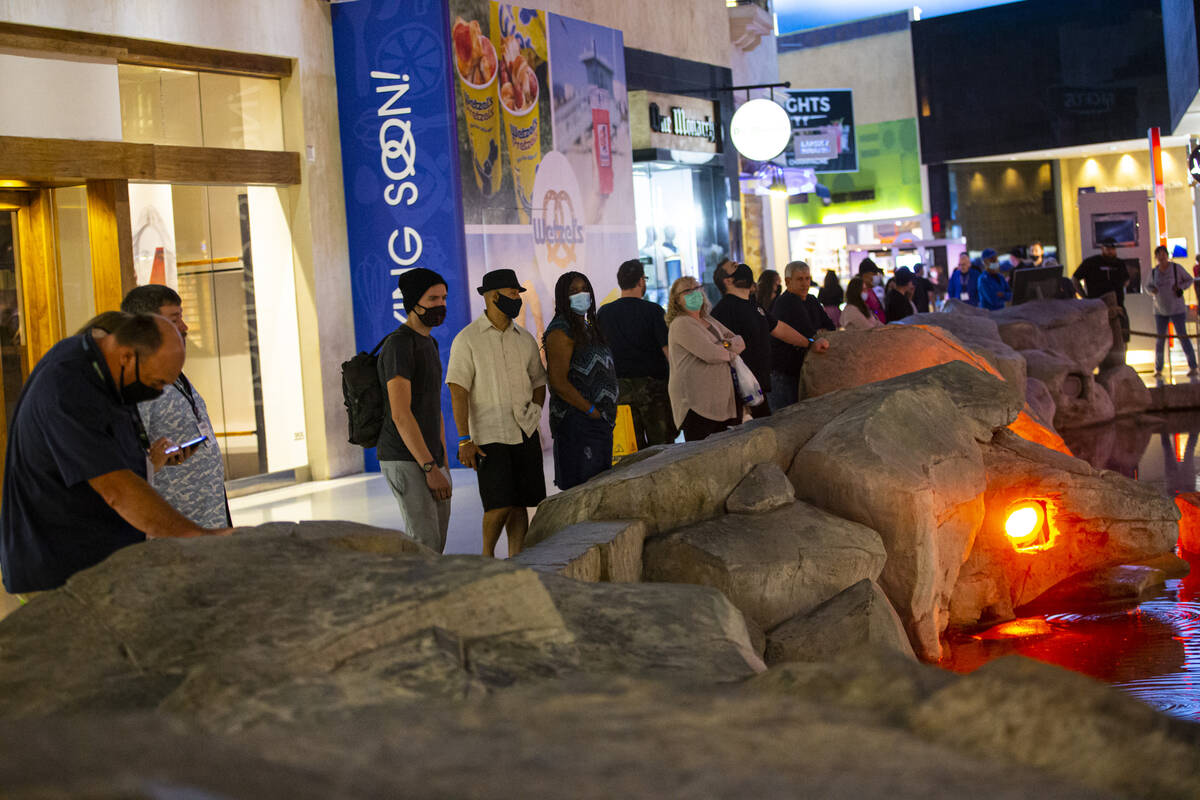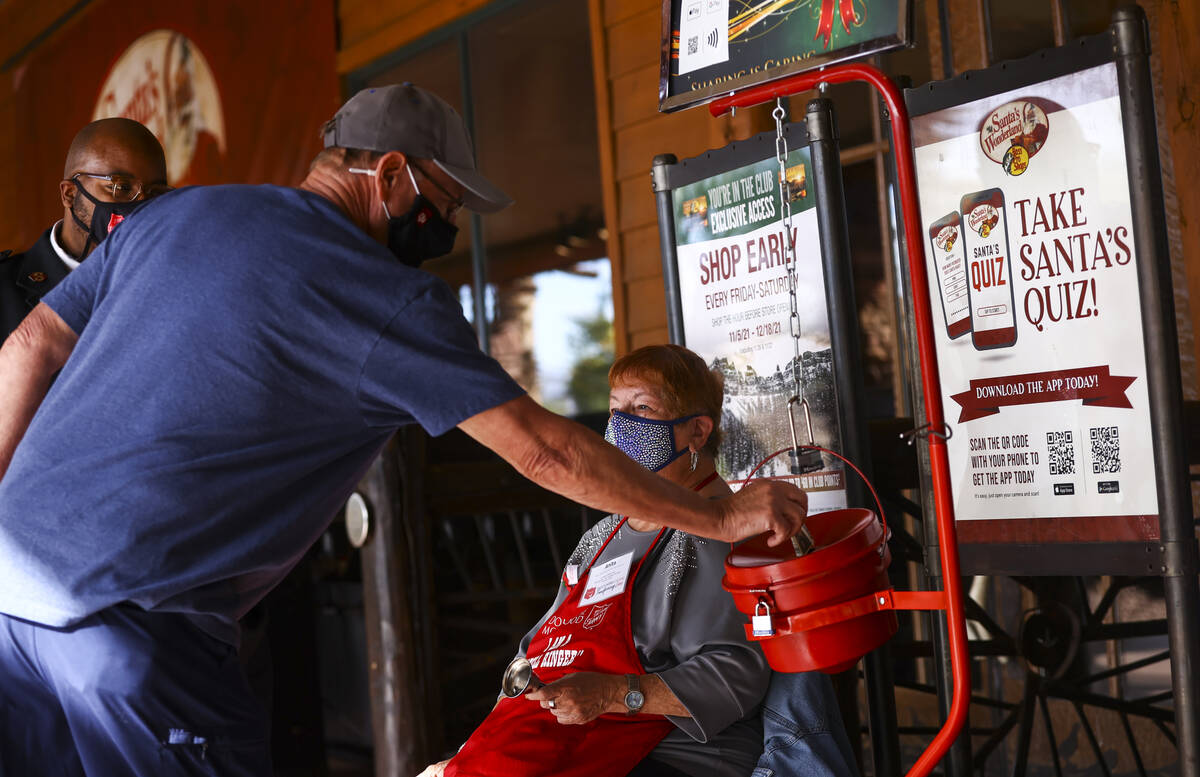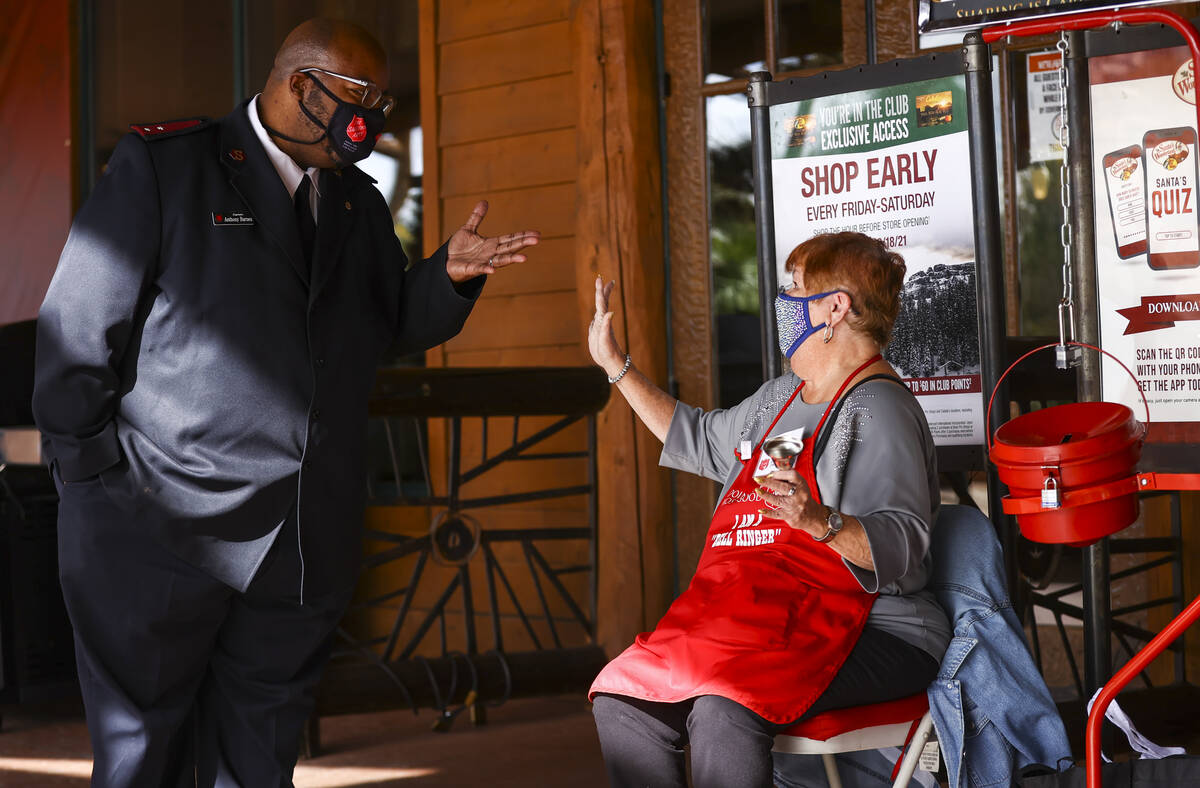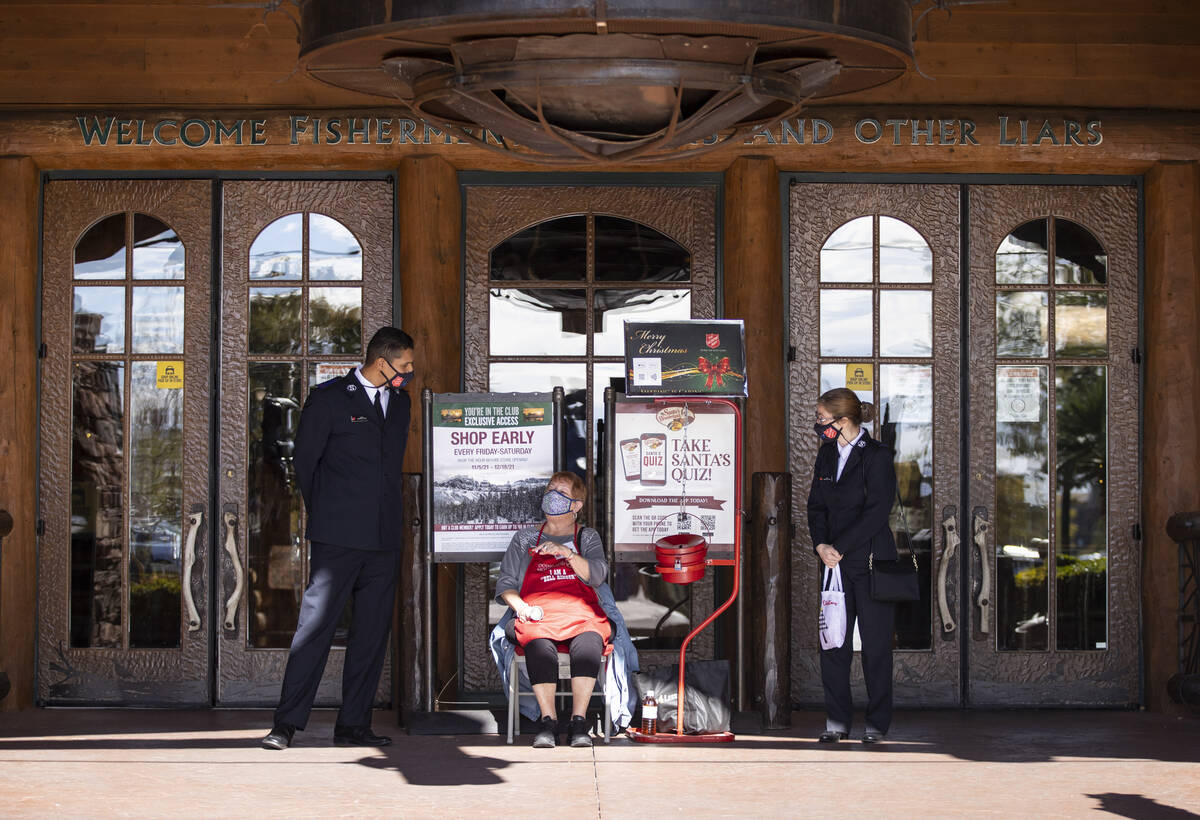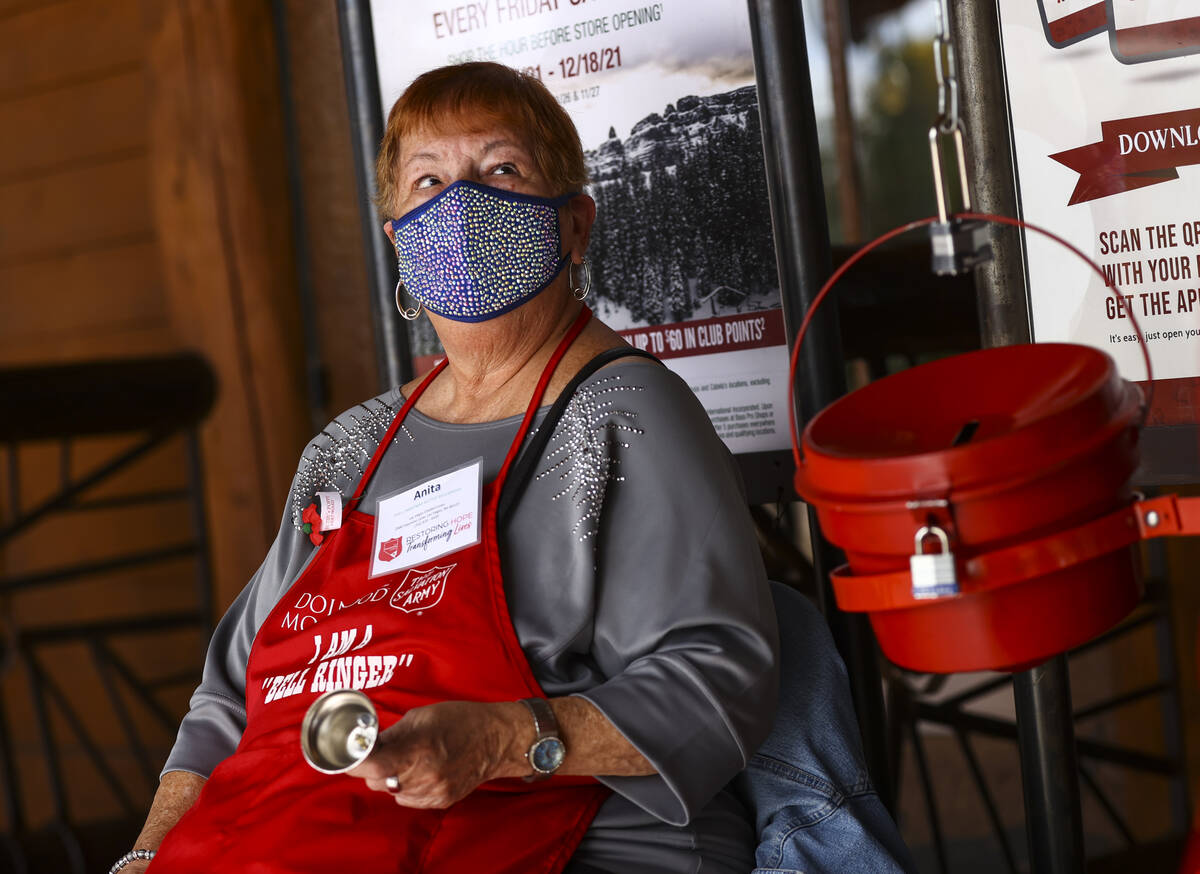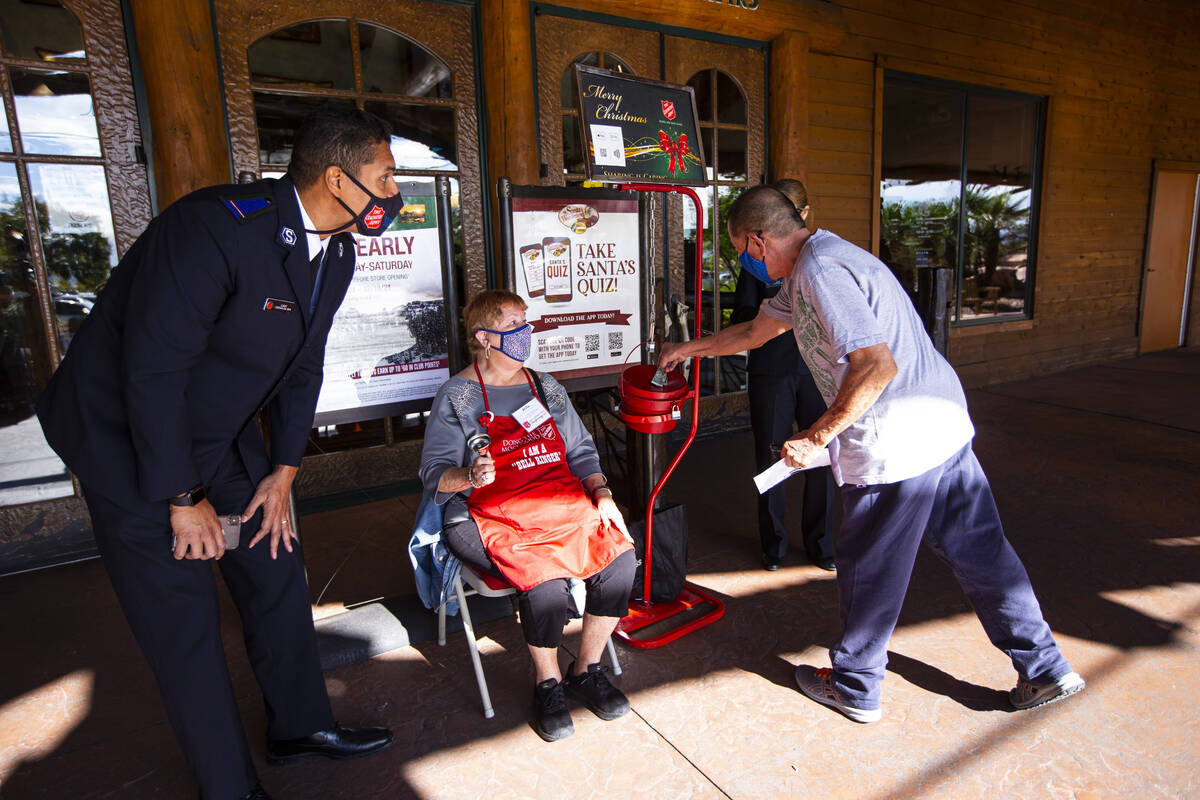‘It can go a long way’: Donations of small change boost Las Vegas charities
It’s amazing what a handful of pocket change can do. Buy food for families in need. Provide housing and comfort during a medical crisis. Help people enjoy the holiday season.
And whether it comes by tossing a handful of coins into a red kettle or impulsively rounding up the tab for a take-out lunch, the small donations are just as welcome to a charity as larger, more traditional donations.
Call it impulsive giving, spontaneous giving or microgiving: those spur-of-the-moment donations of small sums that we make to charities every day. That small change adds up, and area nonprofits say the unplanned generosity is a welcome supplement to their annual budgets.
A Christmas icon
With their ubiquitous holiday presence, the Salvation Army’s iconic red kettles represent the granddaddy of impulsive giving campaigns. Started in 1891 in San Francisco to fund Christmas meals for the needy, the signature red kettles manned by bell ringers mark the nonprofit’s most recognizable fundraising effort.
“This is, arguably, the most visible time for the Salvation Army in the year,” says Capt. Anthony Barnes, county coordinator for The Salvation Army Southern Nevada, which has kettles in about 65 locations this year. Last year’s campaign raised more than $300,000.
That the campaign runs only at Christmas — although Barnes says kettles have been known to appear at Christmas in July events, too — has turned it into a seasonal tradition. The kettle “resonates nostalgia,” says Barnes, who, as a kid in Brooklyn, would take the subway to the iconic 34th Street Macy’s to “see somebody at the red kettle with two school bells and snow falling. It’s an amazing thing to see as a kid.”
These days, Barnes sees passersby who donate impulsively and others who don’t. “Most people light up and there’s a smile on their face and they contribute with their heart, not just their wallet,” he says, while others break out their best “duck and dive moves.”
Personalities
Personality traits may play a part in separating the givers from the duckers and divers. “Altruism, generally speaking, is one personality characteristic associated with donation,” notes Stephen Benning, an associate professor of psychology at UNLV. “Altruism entails believing that it is right and proper to give to other people rather than to take selfishly.
“People who are sensitive to inequities in resource allocation may work to correct those through their charitable giving,” Benning continues. “It’s also possible some folks have been raised in a particular (religious) tradition and might feel the pull of those traditions.”
Meanwhile, Benning says, “part of what makes spur-of-the-moment giving happen is, it makes giving so much easier than having to plan out what you’re going to do — research the charity and fill out a donation form and set up some kind of payment structure — as opposed to rounding up (the tab) at the store or throwing a couple of dollars I’ve already got into a bucket.”
Of course, it can be less complicated, too. “It’s a warm and fuzzy feeling when you drop coins or hear change drop into the little bucket or round up to a dollar,” says Linda Smith, longtime fundraiser for Opportunity Village and now a nonprofit and fundraising consultant.
Yes or no
Research indicates that making giving convenient and seeking relatively small donations can help to turn a potential giver into an actual spur-of-the-moment giver. “The simplest rule to remember, and this applies to both intuitive and deliberate (giving), is to make it easy for someone, and that’s what microgiving is about,” says Dean Karlan, a professor of economics and finance at Northwestern University and president and founder of Innovations for Poverty Action.
“There also would be one downside to this,” Karlan adds, in that “it doesn’t necessarily lead to the best charities being funded. Indeed, it leads to the best marketers being funded.”
Because impulse donors may not have researched a potential charitable target, they may be likely to respond to a source they trust. “When you see these drives or (coin collection) boxes at the checkout counter, 99.9 percent of the time it’s a very recognizable charity,” Smith says.
Having firsthand familiarity with a charity also can tip the scales toward an impulsive donation. Barnes has talked with donors who know of The Salvation Army’s work because they were, at one time, clients. But, mostly, “people feel good doing a good thing,” he says. Dropping a few bucks into a red kettle when the opportunity presents itself is “an easy way to get involved.”
“At the end of the day, most people give to charities because they care about the cause,” Karlan agrees, and giving “helps them be a part of something that makes them feel better.”
Making it fun
Working a bit of entertainment into the donation process can’t hurt, either. At Miracle Mile Shops at Planet Hollywood Resort & Casino, passersby can toss change into a simulated indoor rainstorm. The money is donated to a local charity as part of the shops’ Caring, Giving, Changing campaign. The attraction has raised about $130,000 for local nonprofits since it began in 2010, says Wendy Albert, senior director of marketing for Miracle Mile Shops.
“I think people do like to donate money in this way because it’s easy,” she says. “It’s a shopping center and you walk through a rainstorm. For some, it brings back memories of tossing a coin in a wishing well. Also, the biggest thing is the money is going to great organizations who are doing so much in the community.”
“We get a lot of foreign coins and paper money,” Albert adds. “We’ve gotten gaming chips before. There have been some high denominations. Definitely, we’ve seen it all.”
The beneficiary for 2021 has been The Just One Project, which promotes community involvement, feeds the needy and provides programs for youth and the homeless. Brooke Neubauer, the organization’s founder, says the nonprofit agency assists 20,000 to 30,000 people each month.
From January through early October of this year, The Just One Project has collected about $6,200 from the Caring, Giving, Changing Program, according to Miracle Mile Shops. While the charity receives support from a number of partners, “every single piece adds up to support our organization,” Neubauer says. “Whether it’s a very large grant or a $25 check or whether it comes (in the form of) hundreds of pennies, it all goes into making an incredible difference.”
In fact, given its mission of persuading people that just one person can make a big difference, raising money coin by coin seems fitting, and the wishing well theme seems apropos.
“Wishing wells are iconic,” Neubauer says. “So if you have change in your pocket and pass a wishing well, you almost have to throw your change in.”
Making it convenient
At area McDonald’s restaurants, customers can drop change into donation boxes in dining rooms and drive-through lines to support the local Ronald McDonald House, which provides accommodations and services to families traveling to Las Vegas for children’s medical treatment.
“We call it on-the-spot giving or spontaneous giving,” says Alyson McCarthy, CEO of Ronald McDonald House Charities of Greater Las Vegas.
The valley’s first Ronald McDonald House opened in 1998, and plans for a second were unveiled early December. McCarthy says all of the money collected here is spent here, and that parents never are given a bill.
In 2020, collection boxes raised almost $117,000 for Ronald McDonald House, according to the nonprofit. This year, donations through September totaled almost $81,000. Compared to the organization’s annual operating budget — which McCarthy expects to be close to $2.2 million in 2022 — donation boxes are a relatively small revenue source. Nonetheless, $117,000 equals “a lot of nights of stay,” McCarthy says, and “can go a long way and can impact a lot of families’ lives.”
Another fundraising effort, McDonald’s Round Up program, went national in December 2019. It allows patrons to round up their meal checks to the nearest dollar, with the change going to Ronald McDonald House. From December 2019 through December 2020, the Round Up program raised almost $48,000, and this year, just over $30,000 had been collected through August.
According to McCarthy, the average round-up donation here is about 40 cents. She expects to see both Round Up and donation box collections increase through the holiday season.
“Our rounded-up donations are three to four times higher in November and December than the rest of the year,” she says. “We average about $3,000 through round-up, and during November and December that goes to $8,000 or $10,000 in each of those months. People already feel the joy of the season, so they’re already open to it. And it’s never more than 99 cents.”
“I do believe there are people who don’t want to carry around change,” McCarthy says, but “I think the majority of people … are just good-hearted people who want to make a difference in the world.”
A technological assist
Technology has made impulse giving as easy as tapping out a text message. At McDonald’s, customers who pay cashlessly can press a button on their phones to authorize a donation, while Salvation Army of Southern Nevada donors may contribute to the red kettle campaign through the organization’s website, by scanning QR codes found at kettle stands or by texting LVChristmas to 51555.
In addition to being convenient, such options address a very modern issue, Barnes says: “Most people don’t carry cash now. I think people still want to support the kettle, but we have to meet people where they’re at.”
“I think the easier you can make giving, the better it is for the donor,” McCarthy says. “Technology is driving charitable giving in so many ways.”
An added benefit is that offering technological donating options is “definitely a way to reach young people,” Smith says. “That’s how they roll.”
A personal touch
Trends and technology aside, perhaps the most powerful inducement to making an impulse donation remains simple face-to-face interaction. Freddy Smith, owner of five area Fabulous Freddy’s Car Wash locations, has been raising money for valley nonprofits and schools for about 15 years. His tactic: Cashiers and employees just ask customers if they’d like to donate.
Many do, Smith says. While he couldn’t estimate what an average month’s donations might amount to, Smith says he has collected as much as $10,000 or $15,000 for a nonprofit, depending on how long a campaign might last. Most donations are small, he adds, but “I’ve seen hundred-dollar donations before.”
Some donors prefer to remain anonymous — “Some put ‘Mickey Mouse’ or something” on cards donors can sign and have posted in stores, Smith says — and some are regulars who routinely build a contribution into their car wash budgets.
For others, “it’s kind of spontaneous,” Smith says. “It just depends on their mood. I’ve got some customers who might get annoyed, but, obviously, I get a lot more that are positive. It seems to be a pretty good thing.”
Contact John Przybys at jprzybys@reviewjournal.com. Follow @JJPrzybys on Twitter.



